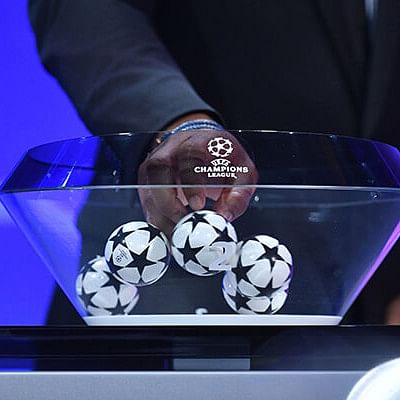Is the draw system for cup competitions really fair?

Two teams from the same group get drawn in a knockout tie despite this not being permitted in tournament by-laws. A 'faultless' software directs an ineligible team's ball to be placed in the hat for a draw, leaving the eligible one out.
As confusion reigns supreme among the fans, the organisers are left red-faced to answer uncomfortable questions. To save their face, they end up redoing the draw.
This fiasco, as stunning as it sounds, happened in none other than club football's premier competition – the UEFA Champions League (UCL). This week's round-of-16 draw has only served to expose the wider issues regarding the existing draw system which only fuels the ongoing controversy.
A major recurring theme is how a few of the strong and "marketable" teams end up drawing other strong teams very frequently, resulting in an increase of the blockbuster ties. Manchester United is perhaps the best example here, having drawn out Paris Saint-Germain, RB Leipzig, Milan, Barcelona and Atletico Madrid in the UCL and UEFA Europa League over the last few seasons.
PSG, boasting an embarrassment of riches on and off the field, represent another instance where a team gets far too many tough ties. Their last two group-stages were tricky, and their last 4 knockout round opponents include the likes of Bayern Munich (twice), Barcelona and now Real Madrid.
This stands in stark contrast to the fortunes of Manchester City and current European champions Chelsea. They have drawn favourable groups over the last few seasons, with the inexplicable partnership between City and Shakhtar Donetsk well-documented. Last night particularly stands out for Chelsea, who drew Lille TWICE from a hat of Lille, Ajax, Real Madrid and Bayern Munich.
The examples mentioned above are only a few of the many instances out there. As fans, all we want is entertainment, and hence our obsession with blockbuster ties. But with the draw's outcome becoming predictable, the question arises – are there other external forces influencing this?
A blockbuster tie is an organiser's dream. These ties open up more avenues for extra TV and sponsorship revenues for UEFA, while increasing fan interest too. A Messi-Ronaldo duel or a Sergio Ramos homecoming at the Real Madrid would certainly generate more income than if their respective teams went up against the likes of, say – Lille, Villarreal or Salzburg. Couple that with the fans' obsession with blockbuster ties, the UEFA might well be tempted to influence the draws to draw big ties frequently.
There have been numerous allegations of corruption within the European football structure, so they might well influence the imbalance in the draws. After all, corruption has been proven in football before, and deeper investigations might reveal irregularities or collusion between organisers, powerful teams and sponsors.
The draw process looks fair on the eye. But the trends and predictability shown over the last few seasons raise questions about whether it's fair at all. The main reason behind the charm and excitement of the big matches is because they are rare. That charm begins to vanish if they occur too frequently. What happens behind the scenes is debatable, but one thing is certain – the allure of European football will be threatened if corruption allegations turn out to be true.
Inqiad Bin Ali has 'got a pain in his heart and a love in his soul' to put it in an artistic way. He is found deep in thoughts at [email protected]

 For all latest news, follow The Daily Star's Google News channel.
For all latest news, follow The Daily Star's Google News channel. 








Comments